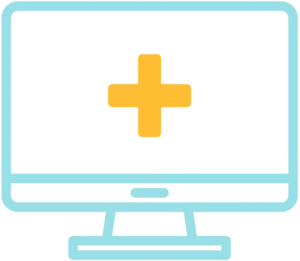Restless Legs Syndrome
Managing RLS effectively can improve sleep quality and overall well-being.
Request An AppointmentRefer A Patient
What is Restless Legs Syndrome?
Table Of Contents
Symptoms and Causes
RLS is characterized by sensations such as tingling, aching, or throbbing in the legs, which temporarily improve with movement. The condition may be linked to genetics, iron deficiency, pregnancy, or underlying health issues such as kidney disease or neuropathy.

Diagnosis and Evaluation
A diagnosis is based on a patient’s medical history, symptom patterns, and response to movement. Sleep studies, such as an in-lab sleep study or a home sleep apnea test, may be recommended if sleep disturbances are significant. Blood tests can help identify potential deficiencies or contributing factors.
Treatment and Management
Treatment focuses on symptom relief and addressing any underlying causes. Management strategies may include:
- Lifestyle Modifications – Regular physical activity, good sleep hygiene, and avoiding caffeine or alcohol may help reduce symptoms.
- Medications – Dopamine agonists, anticonvulsants, and certain medications affecting neurotransmitters may be prescribed for symptom control.
- Iron Supplementation – If testing reveals low iron levels, iron therapy may be recommended.
- Sleep Therapy – Patients experiencing disrupted sleep may benefit from a comprehensive sleep evaluation, including options such as in-lab sleep studies or home sleep apnea testing.
Empowering Lifestyle Adjustments for Symptom Relief
Simple changes in daily habits can play a significant role in reducing RLS symptoms:
- Engaging in moderate exercise without overexertion
- Establishing a consistent sleep routine
- Using heat or cold therapy to soothe leg discomfort
- Practicing relaxation techniques such as stretching or massage
Frequently Asked Questions
0
What triggers RLS symptoms?
Common triggers include prolonged inactivity, caffeine, alcohol, nicotine, and certain medications. Underlying health conditions can also contribute to symptom severity.
0
Can RLS be cured?
There is no cure for RLS, but symptoms can often be managed effectively through treatment and lifestyle changes.
0
How does RLS affect sleep?
RLS can lead to difficulty falling and staying asleep, contributing to daytime fatigue and decreased quality of life. Proper diagnosis and treatment can help improve sleep patterns.
0
What role does sleep evaluation play in managing RLS?
Sleep studies can help assess the impact of RLS on sleep quality and rule out other sleep disorders. In-lab and home sleep studies provide valuable insights for treatment planning.
0
When to seek medical help for RLS?
If RLS symptoms interfere with daily life or sleep, consulting a healthcare provider is recommended for evaluation and management options.

